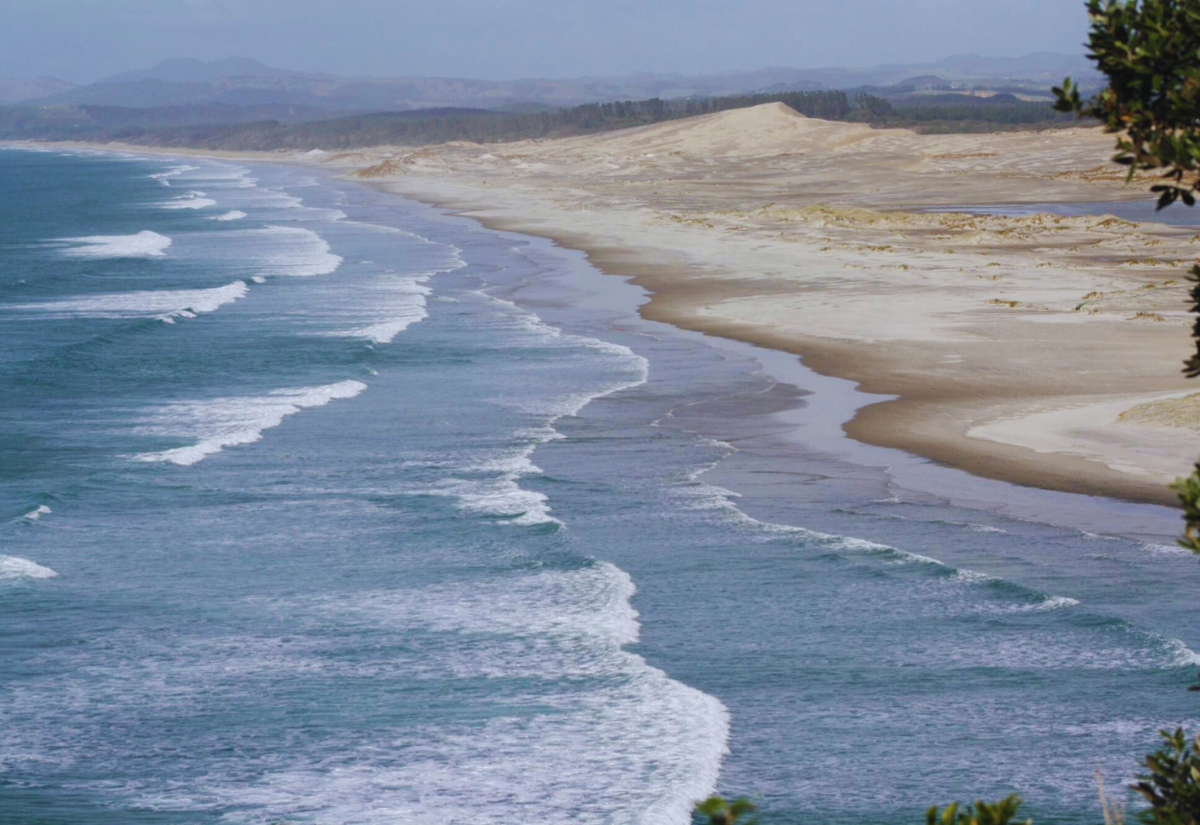Mangawhai sandspit loses over 420,000 tonnes of sand, raising concerns for its future
18 June 2025, 2:01 AM

More than 420,000 tonnes of unique, non-renewable sand have been lost from the Mangawhai sandspit, prompting growing concerns among residents and experts about the landform’s long-term stability and ecological health.
The Mangawhai sandspit is one of only five drumstick-shaped sandspits in Aotearoa, formed from volcanic sediments carried by the Waikato River hundreds of thousands of years ago. Its unusual shape and origin make it a focal point for coastal management challenges, as well as a flashpoint for competing environmental, economic, and community interests.
As New Zealand’s fastest-growing coastal settlement, Mangawhai faces potential economic risks exceeding 100 million if the sandspit fails. A second breach, similar to the one in 1978, could profoundly impact property values, tourism, and investor confidence.
A legacy of community action: The Big Dig of 1991
During February 1991, around 40 local volunteers mobilised at dawn with heavy machinery—tractors, bulldozers, excavators—and even hand tools to reopen the blocked northern harbour mouth and seal off a dangerous southern breach. Despite warnings from authorities, they worked for four days to carve a new channel around 25 metres wide and 4 metres deep.
Their initiative prevented harbour silting and saw restoration of the principal harbour entrance by June 1996, involving the relocation of over one million cubic metres of sand.
This landmark effort led to creation of the Mangawhai Harbour Restoration Society (MHRS), which today manages dredging, dune planting, and long‑term spit protection.

Photo courtesy of: Mangawhai Harbour Restoration Society (MHRS).
Past sand mining
Sand extraction from the Mangawhai–Pakiri embayment began before 1940, and by the 1970s sand‑mining practices—often blamed for destabilising the dunes—contributed to the 1978 harbour closure. From 1993 to 2004, companies including McCallum Brothers conducted commercial suction-dredging of seabed sand at Mangawhai Heads, removing up to 45,000 m³ of sand annually . In 2004, the Mangawhai Harbour Restoration Society successfully challenged the issuing of new consents.
McCallum Brothers reapplied in 2005, but were denied resource approval. Notably, while McCallum’s obtained an Environment Court ruling that dredging was sustainable, Auckland Regional Council later appealed due to concern over possible environmental damage.
McCallum Brothers has since shifted focus to deeper offshore sources farther north, though it continues to face resistance for any new nearshore sand extraction in the wider Pakiri–Mangawhai embayment.
Current challenges and ongoing stewardship
Today, the sandspit endures pressure from climate-driven sea-level rises and intensifying storms, alongside sand-mining history, urban development, and conservation efforts. Experts and local authorities assign the spit a cautious C-grade.
The Mangawhai Harbour Restoration Society now operates the country’s only local dredging scheme, relocating harbour-deposited sand back to the spit each year. Combined with an 800-metre sand bund, dune planting, pest control, and fencing, this effort is vital to maintaining the spit’s resilience.
Funded by approximately 5,000 ratepayers (NZD 80 annually via Kaipara District Council), the programme balances ecological protection with navigation safety.
Dredging and sand placement are strictly regulated to protect the nesting seasons and habitats of endangered birds like the fairy tern (tara‑iti) and northern dotterel. The Department of Conservation controls sand deposition zones to safeguard these species.

Fairy Tern (Tara‑Iti) - photo courtesy of DOC
The spit supports the largest breeding population of the fairy tern in New Zealand, with under 45 individuals remaining. Conservation work includes managing vegetation to maintain open nesting areas. Regional authorities acknowledge complex regulatory requirements but praise the volunteer-driven stewardship efforts.
Mangawhai sandspit’s story is one of resilience through collective action—from the dramatic “Big Dig” of 1991 to the ongoing protection and restoration work. It bears the legacy of past sand mining by McCallum Brothers, but reflects what a committed community, supported by science and adaptive management, can achieve. Despite ongoing threats from the environment and development, the sandspit remains protected today thanks to sustained local and ecological dedication.



